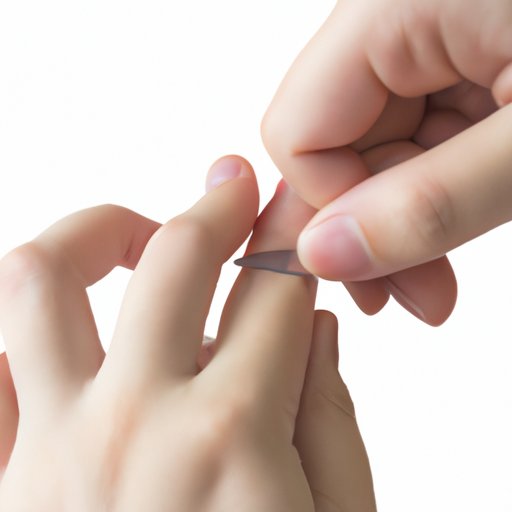
Introduction
Getting a splinter is no fun, and leaving one untreated can cause infections and other complications. Sometimes, even after you think you’ve removed the splinter, it’s not always easy to know for certain. That’s why it’s important to know how to tell if a splinter is still there and what to do about it.
Methods of identifying if a splinter is still present
There are a few methods you can use to check if a splinter is still present:
Checking the affected area
The first method is to carefully inspect the affected area and look for signs of the splinter.
Using a magnifying glass
You can also use a magnifying glass to get a closer look. This can help you see if there is still a piece of the splinter embedded in the skin.
Pressing down on the affected area
Another method is to press down on the affected area with a clean finger. If you feel any pain or tenderness, there may still be a splinter present.
Methods of removing a splinter
If you’ve determined that there is still a splinter present, it’s important to remove it as soon as possible. Here are a few methods you can use:
Using a needle or tweezers
You can use a sterilized needle or tweezers to carefully remove the splinter. Make sure to pull it out in the same direction it entered the skin to avoid breaking it or leaving any pieces behind.
Inspecting the skin again to make sure the splinter is fully removed
After the splinter has been removed, inspect the skin again to make sure there are no remaining pieces or fragments.
Soaking the area in warm water to make the splinter easier to remove
If the splinter is difficult to remove, soaking the area in warm water for a few minutes can help to soften the skin and make it easier to extract the splinter.
Monitoring symptoms
After the splinter has been removed, it’s important to keep an eye on the affected area and watch for any signs of complications.
Importance of keeping an eye on symptoms
Inflammation, redness, pus or discharge are common symptoms of an infection or other complications. If you notice any of these symptoms, seek medical attention immediately.
What to look out for (inflammation, redness, pus or discharge)
If you experience increased pain or tenderness, swelling, or if the surrounding skin feels warm to the touch, it may be a sign of an infection.
When to seek medical attention
If you’re unable to remove the splinter yourself or you’re unsure if there is still a splinter present, it’s important to seek medical attention.
The importance of consulting a healthcare professional
A healthcare professional can provide safe and effective treatment to remove the splinter and treat any complications that may arise.
Conclusion
A splinter left untreated can cause serious complications. It’s important to know how to identify and remove a splinter and to keep an eye on the affected area for any signs of complications. If you’re unsure or unable to remove the splinter, don’t hesitate to seek medical attention.
By following these simple steps, you can ensure that your splinter is properly removed and that your skin stays healthy and infection-free.




